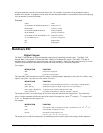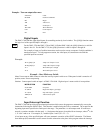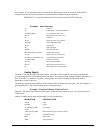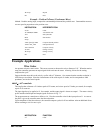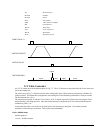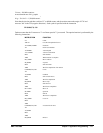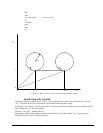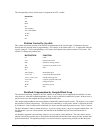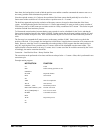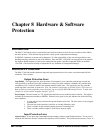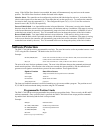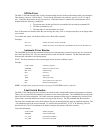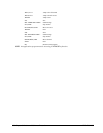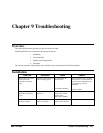
174 • Chapter 7 Application Programming DMC-1700/1800
The corresponding velocity for the motor is assigned to the VEL variable.
Instruction
#A
JG0
BGX
#B
VIN=@AN[1]
VEL=VIN*20000
JG VEL
JP #B
EN
Position Control by Joystick
This system requires the position of the motor to be proportional to the joystick angle. Furthermore, the ratio
between the two positions must be programmable. For example, if the control ratio is 5:1, it implies that when the
joystick voltage is 5 Volts, corresponding to 1028 counts, the required motor position must be 5120 counts. The
variable V3 changes the position ratio.
INSTRUCTION FUNCTION
#A Label
V3=5 Initial position ratio
DP0 Define the starting position
JG0 Set motor in jog mode as zero
BGX Start
#B
VIN=@AN[1] Read analog input
V2=V1*V3 Compute the desired position
V4=V2-_TPX-_TEX Find the following error
V5=V4*20 Compute a proportional speed
JG V5 Change the speed
JP #B Repeat the process
EN End
Backlash Compensation by Sampled Dual-Loop
The continuous dual loop, enabled by the DV1 function is an effective way to compensate for backlash. In some
cases, however, when the backlash magnitude is large, it may be difficult to stabilize the system. In those cases, it
may be easier to use the sampled dual loop method described below.
This design example addresses the basic problems of backlash in motion control systems. The objective is to control
the position of a linear slide precisely. The slide is to be controlled by a rotary motor, which is coupled to the slide
by a leadscrew. Such a leadscrew has a backlash of 4 micron, and the required position accuracy is for 0.5 micron.
The basic dilemma is where to mount the sensor. If you use a rotary sensor, you get a 4 micron backlash error. On
the other hand, if you use a linear encoder, the backlash in the feedback loop will cause oscillations due to
instability.
An alternative approach is the dual-loop, where we use two sensors, rotary and linear. The rotary sensor assures
stability (because the position loop is closed before the backlash) whereas the linear sensor provides accurate load
position information. The operation principle is to drive the motor to a given rotary position near the final point.



